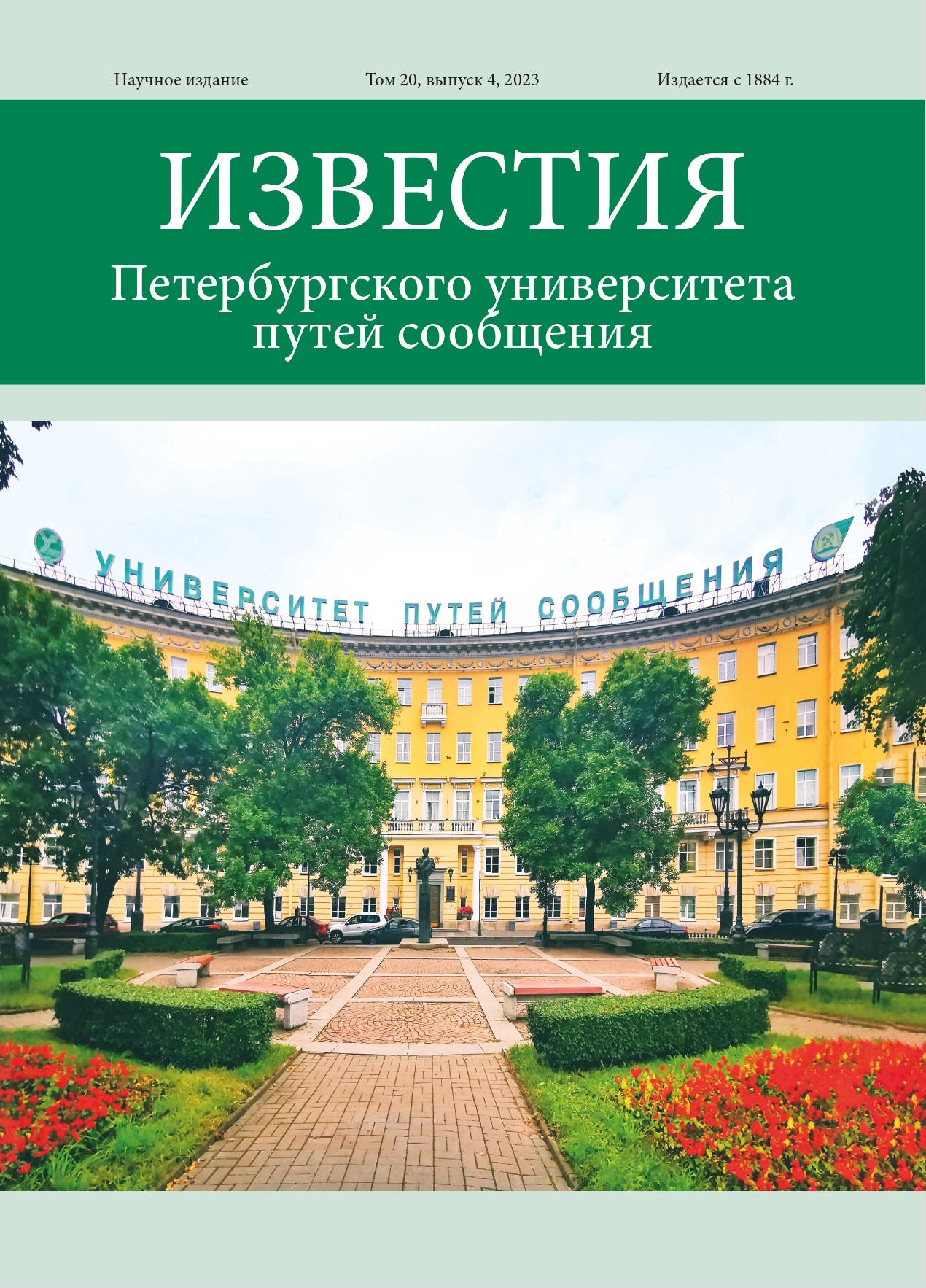Russian Federation
Russian Federation
UDC 621.333
Purpose: To conduct an experimental study of the indicators of electrical energy consumption quality for serially produced freight electric locomotives of alternating current 2(3)ES5K with a collector traction drive and electric locomotives 2(3)ES5S with an asynchronous traction drive, to provide their comparison and comparative analysis. Methods: The main technical characteristics of the collector traction electric drive (TED) NB-514E and asynchronous TED DTA-1100 are presented. A measurement scheme for voltage and current on the power winding of the transformer is proposed. The monitoring of parameters has been carried out directly on electric locomotives using specialized metrological equipment. The processing of experimental data is based on decomposing the original signal into harmonic components using Fast Fourier Transform (FFT). Results: Parameters of voltage and current harmonics, phase shifts, as well as the values of active and reactive power of the corresponding harmonics have been obtained. An analysis of the spectral composition of voltage and current has been performed. Comparative analysis of the results obtained for electric locomotives with collector and asynchronous traction drives in traction mode has shown that the power factor is 0.65 and 0.99, respectively; and the coefficient of non-linear current distortions is 0.53 and 0.15. A conclusion has been drawn regarding significantly higher quality of electrical energy consumption in the asynchronous traction drive. Practical significance: Based on the specific values of the indicators of electrical energy consumption quality in collector and asynchronous traction drives in traction mode, it is possible to proceed to obtaining economic assessments for the transition of the locomotive fleet of Russian Railways (JSCo “RZD”) to nextgeneration electric locomotives of the 2(3)ES5S series.
Freight alternating current electric locomotive, collector traction drive, asynchronous traction drive, experimental study of the quality of electrical energy consumption
1. Gapanovich V. A. Energosberezhenie na zheleznodorozhnom transporte / V. A. Gapanovich, V. D. Avilov, B. A. Arzhannikov i dr.; pod red. V. A. Gapanovicha. - M.: MISiS, 2012. - 620 s.
2. Brecher A. Best Practices and Strategies for Improving Rail Energy Efficiency: Technical reports / A. Brecher, J. Sposato, B. Kennedy // Office of Research and Development. Washington, DC 20590. - Report number: DOT/FRA/ORD-14/02. - 28 Jan. 2014.
3. URL: https://ar2019.rzd.ru/ru/appendices.
4. Dubrovskiy Z. M. Elektrovozy VL60k i VL60pk / Z. M. Dubrovskiy, L. M. Lorman. - M.: Transport, 1993. - 400 s.
5. Nikolaev A. O. Ustroystvo i rabota elektrovoza BL80s / A. O. Nikolaev, N. V. Sesyavin. - M.: Marshrut, 2006. - 512 s.
6. Osincev I. A. Ustroystvo, ekspluataciya i remont elektrovozov serii 2ES5K / I. A. Osincev, A. A. Loginov. - M.: OAO «Rossiyskie zheleznye dorogi», 2014. - 465 s.
7. Nikitenko A. G. Matematicheskoe modelirovanie dinamiki elektrovozov / A. G. Nikitenko, E. M. Plohov, A. A. Zarif'yan i dr. - M.: Vysshaya shkola, 1998. - 274 s.
8. Litovchenko V. V. Matematicheskaya model' kollektornogo tyagovogo elektrodvigatelya / V. V. Litovchenko, D. V. Kokorin, D. V. Nazarov // Elektrotehnika. - 2014. - № 8. - S. 22-29.
9. Litovchenko V. V. Imitacionnaya model' elektrovoza postoyannogo toka s kollektornymi tyagovymi dvigatelyami / V. V. Litovchenko, D. V. Nazarov, V. A. Sharov // Elektrotehnika. - 2019. - № 9. - S. 60-66.
10. Yagup V. G. Matematicheskoe modelirovanie elektroprivoda elektrovoza 2EL5 v rezhime tyagi / V. G. Yagup, A. A. Krasnov // Zbіrnik naukovih prac' Ukraїns'kogo derzhavnogo unіversitetu zalіznichnogo transportu. - 2017. - Vip. 170. - S. 20-31.
11. Kolpakhchyan P. Systems Approach to the Analysis of Electromechanical Processes in the Asynchronous Traction Drive of an Electric Locomotive / P. Kolpakhchyan, A. Zarifian, A. Andruschenko // Rail Transport - Systems Approach. Studies in Systems, Decision and Control. - 2017. - Vol 87. Springer, Cham. - DOI:https://doi.org/10.1007/978-3-319-51502-1_3.
12. Vlas'evskiy S. V. Sravnenie energeticheskoy effektivnosti tyagovogo elektroprivoda elektrovozov peremennogo toka na osnove kollektornyh i asinhronnyh dvigateley / S. V. Vlas'evskiy, B. A. Kuchumov, V. G. Scherbakov // Elektrotehnika. - 2017. - № 9. - S. 72-78.
13. Bessonov L. A. Teoreticheskie osnovy elektrotehniki. Elektricheskie cepi / L. A. Bessonov. - M.: Gardariki, 2007. - 701 s.
14. Chen W. K. The Electrical Engineering Handbook / W. K. Chen. - Academic Press, 2004. - 1018 p.
15. Evstaf'ev A. M. Povyshenie energeticheskoy effektivnosti elektrovozov peremennogo toka / A. M. Evstaf'ev, A. N. Sychugov // Izvestiya Peterburgskogo universiteta putey soobscheniya. - 2013. - № 1. - S. 22-30.
16. Zak V. V. Perspektivnye sposoby povysheniya energeticheskoy effektivnosti elektrovozov peremennogo toka / V. V. Zak, S. A. Starovoytov, I. Yu. Martynyuk // Zheleznodorozhnyy transport. - 2022. - № 9. - S. 40-44.
17. Elektrovozy 2ES5S i 3ES5S: asinhronnaya tyaga pod flagom Rossii // Tehnika zheleznyh dorog. - 2020. - № 1(49). - S. 10-13.









